ARTEMIO FRANCHI 1922-2022
by Massimo Cervelli
Many wonder how it is possible that two stadiums in cities seventy kilometers away from each other and with a historical heritage made up of ancient contrasts, the Guelph and free Florence, reaching out towards international trade and the development of the bourgeoisie, and the Ghibelline Siena, outpost of the Empire and of the resistance of feudalism, may today have the same name and be entitled to the same person.
Artemio Franchi, the greatest manager that Italian football has ever had, was Florentine by birth but Sienese by origin. His father Alfredo, called Olinto, returned from Switzerland, where he had emigrated, and established himself as a cook in Florence, becoming the chef of Sabatini, a restaurant where a lot of Viola history has passed.
Born on January 8, 1922, he became a Fiorentina fan and a visitor to the stadium in the early 1930s: thanks to the baker Bruno Cherubini who accompanied him first and perhaps also to the season ticket received as a reward for his excellent performance at the “Antonio Meucci “.
The many Fiorentina matches lived as a fan, the great passion for football, first played and then refereed, but above all his innate organizational ability led him to direct, from 1945 to 1949, the referees section of Florence.
Fiorentina, led at that time by president Carlo Antonini, called him to replace the “maestro” Ugolini who had decided to return to the Ferrari car manufacturer. Artemio’s father-in-law, Giovanni Pianigiani, father of his wife Alda, was on the board of directors of the viola company. Artemio was the right man to be the company secretary. His wit, confidentiality and seriousness guaranteed for him. Antonini was looking for a trusted man and had found him.
It was an intense, formative experience, which ended with the arrival in the purple presidency of Enrico Befani who revolutionized the management organization chart.
The “Grand Duke” Dante Berretti chose him in 1952 to become the secretary of the Serie D League, of which he became president in 1958. From that position a career began that took him to the top of Italian, European and world football. It is impossible to list all the assignments he has had, so we limit ourselves to pointing out some of the most relevant.
Artemio was head of the Italian delegation at the 1962 and 1966 world championships; president of the FIGC from 1967 to 1976 and then from 1978 to 1980 and member of the CONI National Council for 15 years. In 1973 he was appointed UEFA President and the following year FIFA Vice President; he was chairman of the referees commission, both of UEFA and FIFA, and was repeatedly part of the organizing committee of the World Cup, participating in a total of six editions of the World Cup.
Despite his commitments, Franchi continued to live in Florence and, until the company was restructured, he kept his Fiorentina membership card. More than once he was called to preside over the meeting or in any case to intervene, such as when there was a need to report on the transformation of football clubs into joint stock companies.
The Federal Technical Center of Coverciano was the place most dear to him and the symbol of his reforming work. He stimulated the activity and research of the technical sector through the systematic comparison with the various schools of world football, leading to a permanent evolution of teaching. The Technical Center became the university of European football, a laboratory to bring the future closer and, above all, a point of reference in the European and world football context.
As a child, during the summer holidays, he had cultivated another great passion, symbolized by the handkerchief of the Tower, the symbol of belonging and the bond with the district that was given to “Gino the Florentine”, as he was called when he was four years old. during summer holidays.
On January 21, 1971, forty-five years after that gift, Artemio had the honor of becoming captain of the district of the Tower, without however ever managing to win the Palio.
On 12 August 1983, while he was on his way to pick up the jockey Silvano Vigni, called “Il Bastiano”, to take him to the district dinner, he had a fatal accident against a truck on the Via Lauretana Antica.
The funeral home was set up in the Great Hall of the Technical Center of Coverciano and all world football, starting with the FIFA president, João Havelange, paid homage to the great Tuscan, intelligent and ironic. But the last great tribute to Franchi was the assignment of the 1990 World Cup to Italy, a goal for which he had fought hard.
He was buried in Florence, in the Soffiano cemetery, where Luigi Ridolfi also rests.
On 10 October 1987, the Sienese stadium inaugurated in 1938 was named after him.
On November 26, 1991, the Municipality of Florence decided to name the Municipal Stadium “Artemio Franchi”.




